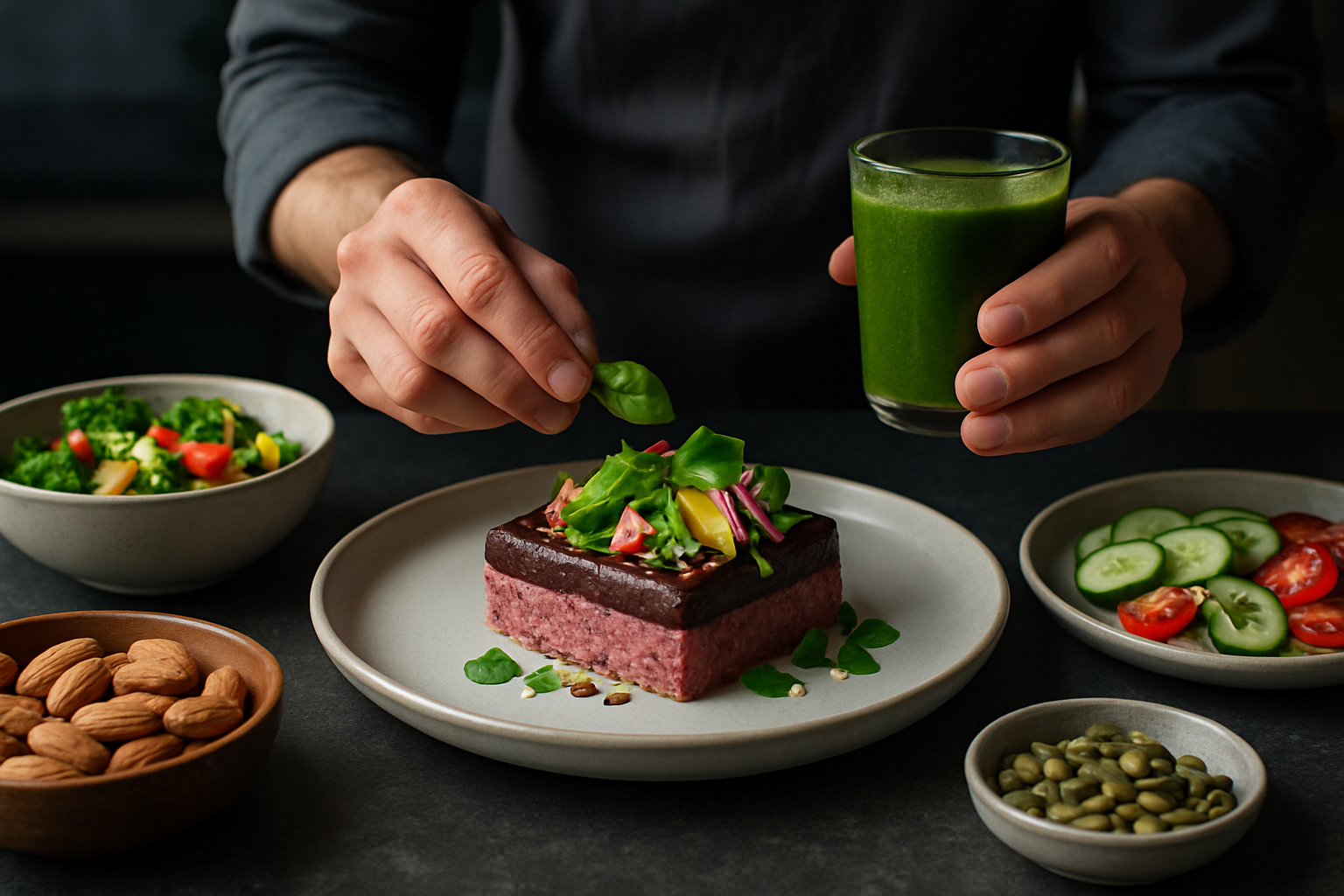Reimagining the Art of Raw Food: A Dive into Creative Uncooked Delicacies
Food is an ever-evolving tapestry of culture, creativity, and innovation. As cuisines evolve and adapt to changing trends, one culinary concept continues to gain momentum: raw food. In its most basic essence, the raw food movement celebrates the purity of ingredients in their most natural, uncooked state. But it's far from just munching on carrots and apples; it's about creating innovative, flavorful dishes that can be as intricate and satisfying as their cooked counterparts.

The Raw Food Movement: A Brief Overview
The raw food movement is not a novel concept. In fact, it dates back to the late 19th century and has seen various waves of popularity since then. The idea is simple: consuming food in its most natural state, uncooked and unprocessed, to reap maximum nutritional benefits. But it’s not just about throwing together a salad; raw food cuisine can include anything from intricate raw desserts to elaborate main courses, all designed with creativity and taste in mind.
The Art of Raw Food Preparation
Raw food preparation is an art in itself, requiring a unique set of skills. Unlike traditional cooking methods, raw food preparation is about maintaining the integrity of the ingredients. Techniques like soaking, sprouting, fermenting, and dehydrating are frequently used. These methods not only enhance the nutritional profile of the food but also transform the texture and flavor, leading to surprisingly diverse and delicious creations.
The Magic of Raw Desserts
When one thinks of raw food, desserts might not be the first thing that comes to mind. But raw desserts are a central part of the raw food movement. Imagine indulging in a decadent chocolate tart, a creamy cheesecake, or a tangy lemon bar - all made without any cooking! Raw desserts often rely on ingredients like nuts, seeds, dates, and raw cacao, creatively combined and transformed into sweet treats that are not just delicious, but also nutrient-dense.
Raw Food and Sustainability
Adopting a raw food lifestyle can also have significant environmental benefits. Raw food diets tend to center around plant-based ingredients, which have a lower environmental footprint compared to animal-based foods. Plus, raw food preparation methods generally use less energy compared to traditional cooking. Thus, embracing raw food can be a step towards a more sustainable lifestyle.
The Future of Raw Food
The raw food movement is more than just a passing trend; it’s a culinary revolution in its own right. As more people become conscious of their health and the environment, the appeal of raw food is likely to grow. And with chefs continually pushing the boundaries of what can be achieved with raw ingredients, the future of raw food looks promising.
Discovering Raw Food Delights: Tips and Facts
-
Raw foodism isn’t just about eating fresh fruits and vegetables. It also includes foods that are dried, fermented, soaked, or sprouted.
-
Raw food doesn’t mean cold food. Food can be warmed, as long as it doesn’t exceed 118 degrees Fahrenheit, which is believed to be the temperature at which nutrients start to degrade.
-
Raw food preparation can require some planning ahead, as sprouting or soaking ingredients can take several hours or even days.
Raw food cuisine challenges the traditional notion that cooking is necessary to create intricate, flavorful meals. It’s a testament to the power of creativity in the kitchen, inspiring us to look at our ingredients in a new light. Whether you’re a seasoned raw food enthusiast or a curious novice, there’s no denying the charm and potential of this innovative culinary movement. So why not take a bite of the raw food revolution and see where it takes you?





